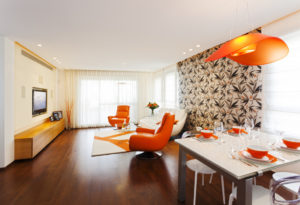- You need to find an appropriate neighborhood that offers resources for special needs children.
- You need to focus on making the home accessible by installing ramps, stairlifts, or elevators.
- Incorporate sensory-friendly design elements such as natural lighting and muted colors to help reduce sensory overload.
- Create a calming space to provide comfort with weighted blankets, fidget toys, and lava lamps.
- Ensure safety with locks on doors and windows, gates and guards, fire alarms, and baby monitors.
As a parent, you want to provide the best possible living environment for your child, but this can be a challenging task when you have a child with special needs. Whether you’re dealing with physical limitations, sensory sensitivities, or other challenges, creating a safe and comfortable space for your child is essential. Here are tips to help parents build a suitable home for their special needs child.
Find the Right Neighborhood
If you’re building a home from scratch or looking to move, consider carefully the neighborhood you choose. Look for real estate properties in developing areas that are surrounded by plenty of natural spaces, such as parks and greenways, that can provide a calming environment for your child. Additionally, check to see if there are nearby schools and other resources that offer programs specifically designed for special needs children.
Focus on Accessibility
Accessibility is crucial when designing a home for a child with special needs. The house should be designed to accommodate wheelchairs or other mobility aids. Consider installing ramps, stairlifts, or elevators to ensure your child has access to all areas of the home. It’s crucial that your child can access all essential areas of the house independently.
Sensory-Friendly Design
Sensory-friendly design is another critical consideration. People on the autism spectrum or with sensory issues may be highly sensitive to certain smells, textures, or sounds. You should avoid using harsh, artificial lighting or loud noises. Aim to incorporate natural light into your design and offer quiet living spaces. You can also experiment with textures, allowing your child to touch and play with different materials to help with sensory integration.
Create a Calming Space

Creating a quiet, calming space can be very beneficial for children with special needs. This could be a small room or a designated area of a larger room designed to be free from sensory stimulation. You can use muted colors for the walls, curtains, or carpets. You can also add soft furnishings and sensory items such as weighted blankets, fidget toys, or lava lamps to create a relaxing space.
Ensure Safety
Safety is of utmost importance when designing a home for a child with special needs. There are plenty of safety measures you can take to protect your child, such as the following four:
Installing locks
Installing locks on doors and windows is a simple but effective way to keep your child safe. Choose locks that can be opened easily in case your child needs help. Additionally, you can use motion detectors or alarms to alert you if your child is wandering around at night unexpectedly.
Gates and guards
If your child uses a wheelchair or has difficulty walking, consider installing gates to prevent them from wandering into dangerous areas. You may also want to consider adding window guards and other safety features as well.
Fire/smoke alarms
Make sure you install smoke detectors and fire alarms throughout the house and check them regularly. These alarms can alert you if there is a fire or smoke in the house and give your child time to get out of the home safely.
Using baby monitors
Baby monitors are a great way to ensure your child is always safe, even when you’re not in the same room. You can set up multiple cameras throughout the home to get a better view of what’s happening.
By investing in these safety and security upgrades, you can ensure that your special needs child is living in a safe and comfortable environment.
Consult with Professionals

While you may have a good idea of what will work best for your child, it can be helpful to consult with professionals such as healthcare providers or occupational therapists. These professionals can help you identify specific needs unique to your child and provide insights on modifications to improve quality of life.
Creating a safe and comfortable home for your special needs child requires some careful consideration. It’s essential to find the right neighborhood, focus on accessibility, create sensory-friendly design elements, provide calming spaces, and ensure safety with locks, gates/guards, fire alarms, and baby monitors.
Consulting with professional healthcare providers or occupational therapists can also help you identify any specific needs unique to your child that need to be addressed in the home environment. With these tips as a guide, parents of children with special needs can feel confident they have created an ideal living space for their loved ones.



















